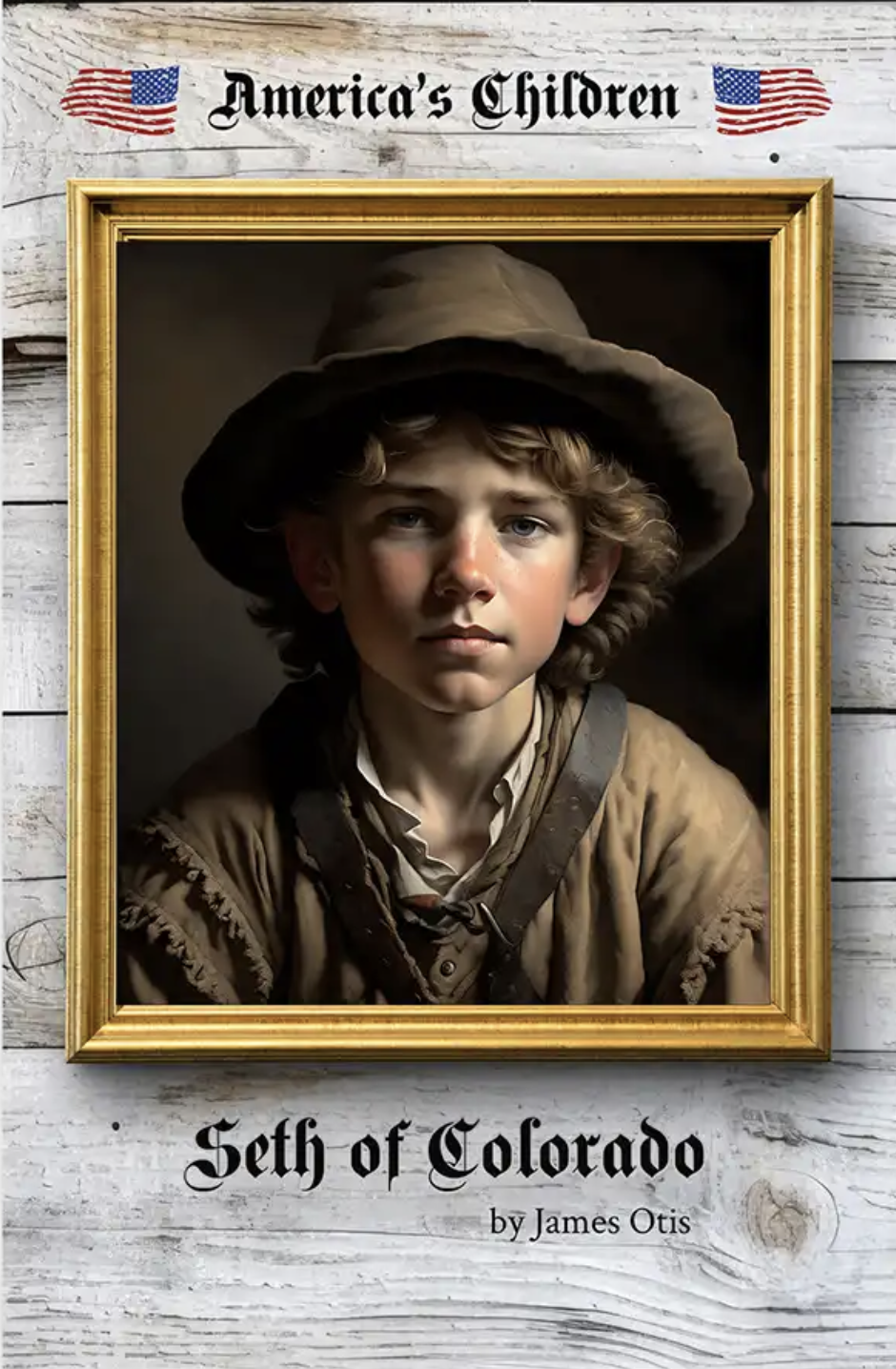
“Journey to the untamed landscapes of Colorado with Seth, a driven young man accompanying a family determined to homestead in this vast, promising territory. But as the lure of opportunity calls, Seth soon trades farming for commerce, establishing a store in the burgeoning pioneer town of Auraria, a stone’s throw from the outpost of Denver. James Otis masterfully captures the spirit of the pioneer era, portraying a community grappling with the ferocity of nature, from blazing fires to destructive floods. Yet, amidst these trials, witness the indomitable spirit of settlers like Seth, and watch as Denver, against all odds, emerges from the wilderness to stake its place on the map. Dive into Seth’s world and experience the adventure, resilience, and growth of a bygone era.”
Written in 1912 by James Otis, this compelling story about the settling of the West was written for children aged approximately 8-12 years old. The reading level is comparable to something like a “Childhood of Famous Americans” book whereas the point of view is something like the “We Were There” books. While Seth is fictional, Otis tells us, through the character of Seth, about the creation of Denver, Colorado as if he were giving us a real first-person account.
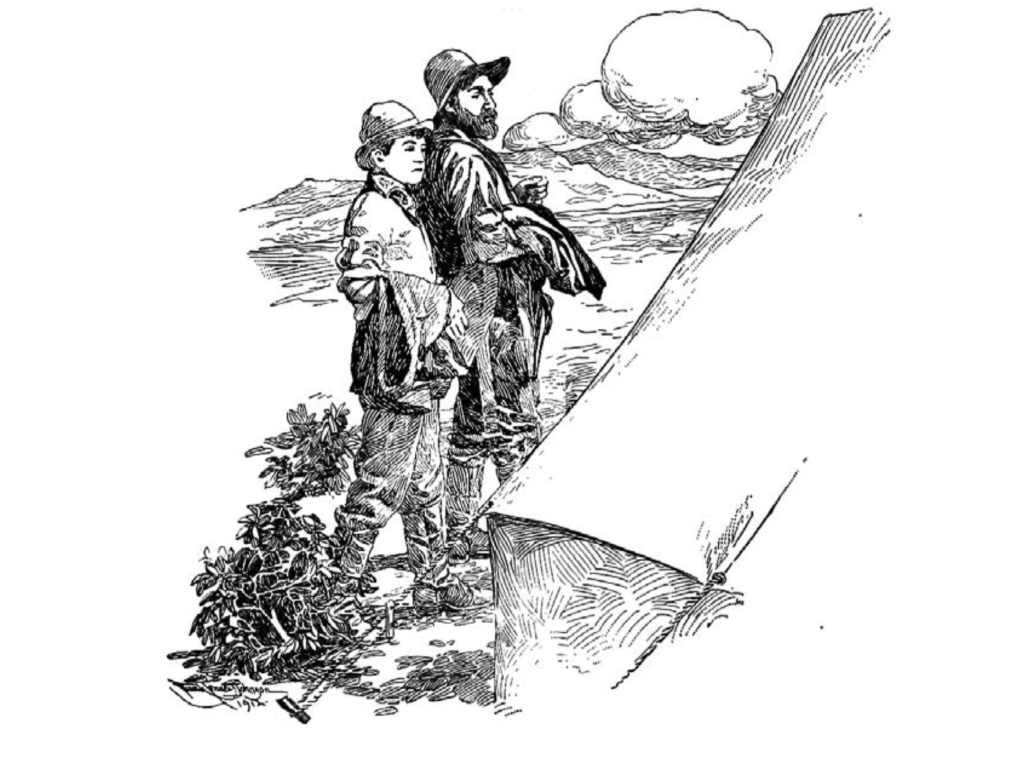
“In those happy days when I would have changed places with no lad whom I knew or had ever heard of, the blow suddenly came which left me orphaned. Within one week both my father and mother died of a fever, and it was as if the sun had been blotted out from the heavens. I could see no ray of light anywhere, and young though I was, my one desire was to join my loved parents, for it seemed as if this world held no place for Seth Wagner.”
When Seth’s parents died of fever in 1857 and their estate was settled, Seth had $161.00 to save and invest in his future. Good friends and neighbors, the Middletons, invited Seth to live with their family, loving him like a son, but also respecting his independence.
When gold fever spread across the West, men were quick to abandon Lawrence, Kansas, most of whom would return impoverished and defeated. Seth and the Middletons lived honestly and had no interest in the fool’s work of prospecting.
“One day Mrs. Middleton surprised me by the announcement that she and her husband, with their children, and forty or more of their fellow-townspeople, had made up their minds to journey into the land of gold, not with the intention of digging, but with the hope of finding in the Colorado country a better farm than could be had in Kansas, for a small expenditure of money. There were in the company, however, some who were bent only on mining; but, as Mrs. Middleton made clear, her husband had no such idea. After having explained, as far as she knew, what they hoped to accomplish, she ended by saying, in her kindly way, putting her arms about my neck much as my own mother would have done:— ‘Why not go with us, Seth? You say you want to be a farmer, and with the money which you have put away, I believe it might be possible to buy land enough to be called a real farm.’”
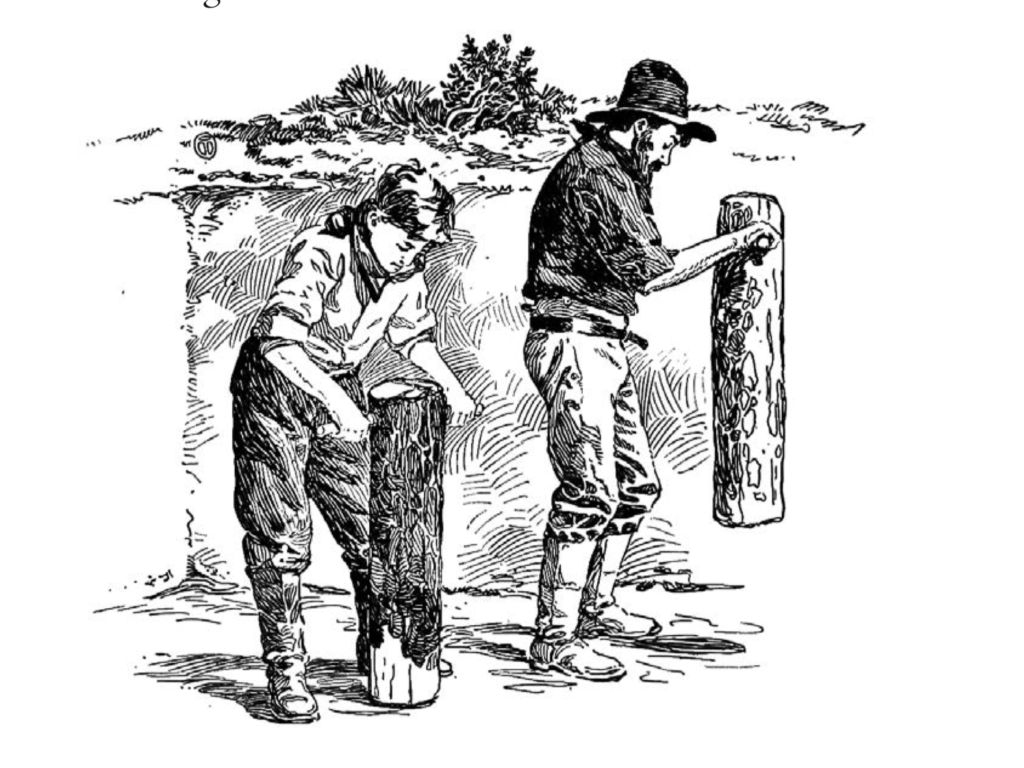
And so, Seth Wagner joins the Middletons in their trek West. What makes this exciting is that this story is different and a bit unexpected. It’s not about wagon trains and pioneer farms. At first, the Lawrence people do settle on farms and try to make a living by selling their crops to hungry prospectors, but Mr. Middleton has excellent business savvy. Instead, he convinces Seth to invest his savings and move to Auraria with his family to open up a goods store for the growing towns of Auraria and Denver and the mining communities nearby.
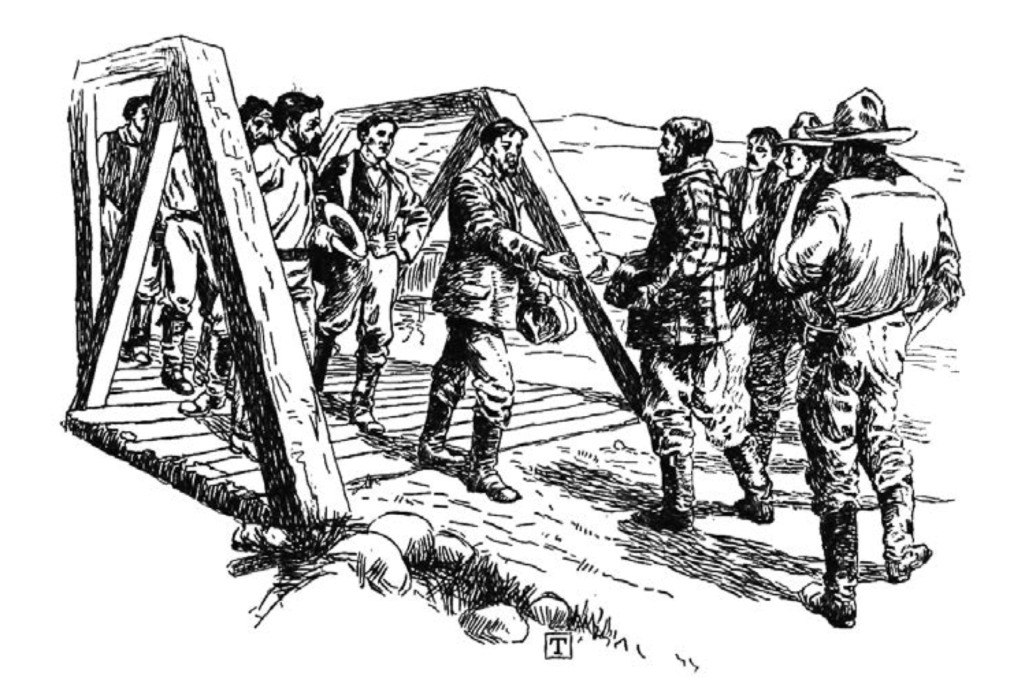
In the ensuing pages, we learn how hard it was to build a business in the middle of the West, miles and miles away from banks and suppliers. As Colorado became more settled, the business became stable, but the culture around it was not. The territory was not yet supported by any kind of law enforcement nor any government. As Denver and Auraria grew, everyone knew that the two communities must merge into one city, but each side of the river wanted to be the “better” side. After much fighting, the communities merge into the City of Denver. And then, there was the Denver Fire of 1863 and the Cherry Creek flood of 1864.
“Not a man wasted a moment bewailing his loss; never a one spoke of the fact that he whose signature twenty-four hours previous would have been good for a round sum was reduced to beggary; but all looked forward hopefully to the future. I even heard one, who had lost not only his shop but his dwelling, and the contents of both, with splendid courage say, that we had reason to rejoice and thank God because no lives had been lost and because we still had our strength and the determination to make our state of Colorado an ornament to the Union.”
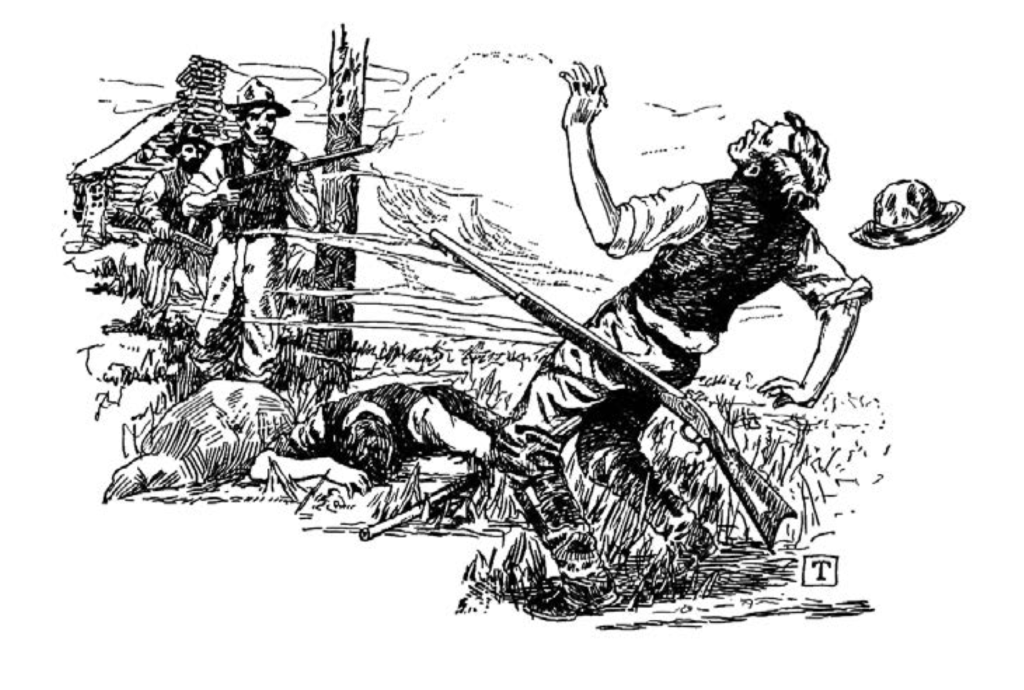
This book lands somewhere between non-fiction and historical fiction. Regardless of how you categorize it, I cannot recommend it more highly.
One important note: I wish to highlight the note from the publisher at the beginning of the book. I think that Anthony Coalfield of Living Book Press has done a brilliant job of explaining why he preserved the original text despite some of the language. I am copying his note here for you to read.
“This book was written in the early 20th century, a time when societal attitudes and language were significantly different from what we recognize today. As you delve into its pages, you might come across terms and descriptions that our modern sensibilities find offensive or inappropriate. These echo the beliefs and biases of that era, some of which were fueled by ignorance, fear, and misunderstanding.
We’ve chosen to preserve the original text, providing an unvarnished window into the past. It’s essential to approach this reading with an open heart and mind, recognizing the historical context that shaped these terms and views. While we’ve made progress as a society, the shadows of these old attitudes sometimes persist.
By recognizing and reflecting on the profound impact such perspectives have left on our culture, we can deepen our understanding of history and chart a course towards a more inclusive and compassionate future.” A Note to the Reader, Seth of Colorado-digital (p. 10). Living Book Press Kindle Edition.
Here is a link to this book on Biblioguides.